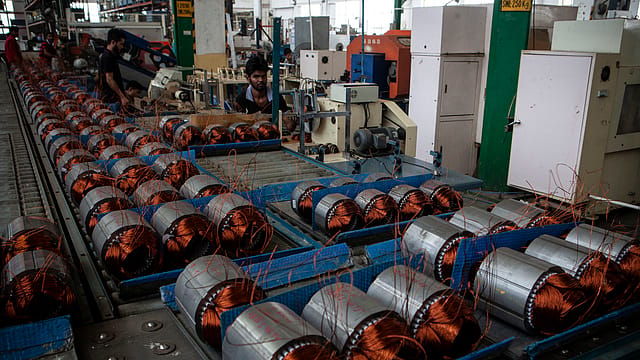Eco Survey 2020-21: Overshadowed by the pandemic
ADVERTISEMENT

The Economic Survey is an important document as it takes stock of things and presents a clear picture of the status of the economy. The survey recommends the policy changes to alter the course, though they are not binding on the government. Economic Survey 2020-21 is of great importance as it follows the pandemic, the lockdown, and erosion of the GDP in the year 2020.
Chief Economic Adviser Krishnamurthy Subramanian gave a detailed justification of the lockdown during 2020 in the first chapter titled, ‘Saving lives and livelihood amidst once in a century crisis’. The chapter lists India’s timely and effective policy response of having ‘short term pain over the long term gain’.
The Survey acknowledges that the economy was passing through an unprecedented recession, for two consecutive quarters of 2020. The economy contracted by 23.9% in Q1 and 7.5% in Q2 and the forecast for the full year has been a de-growth of about 8%. Such contraction in the GDP translates into shaving off $0.3 trillion; India’s GDP that stood at $2.9 trillion in 2019 may now shrink to $2.6 trillion in 2020.
There is no debate or doubt about the severity of the pandemic and its impact on the economy from which a V-shaped recovery is quite likely. The recovery could also be Z-shaped, a new shape that came into currency in recent times. Like what the IMF predicts: a sharp growth of 11.5% in 2021 and returning to trend growth rate of 6.8% in 2022. At this juncture, what is more worrying is that because of the mega impact of the pandemic, the decelerating economy since 2016 is forgotten. GDP growth decelerated in the preceding four years of 2016 to 2019—from 8.26% in 2016 to 7.04% in 2017 to 6.1% in 2018 to 5.02% in 2019.
January 2026
Netflix, which has been in India for a decade, has successfully struck a balance between high-class premium content and pricing that attracts a range of customers. Find out how the U.S. streaming giant evolved in India, plus an exclusive interview with CEO Ted Sarandos. Also read about the Best Investments for 2026, and how rising growth and easing inflation will come in handy for finance minister Nirmala Sitharaman as she prepares Budget 2026.
Volume-I of the Economic Survey is devoted to crisis management, especially tackling the economic crisis post the pandemic. The survey discusses the logic of counter-cyclical policies: During a recession when private sector activities are in low gear, how government spending could accelerate the economy. The government’s response of increased infrastructure spending and reforms in agriculture, healthcare, banking and MSMEs (micro, small, and medium enterprises) could be classified as part of its counter-cyclical policies.
The Economic Survey explains the concept of sustainability of debt. Though economic theory explains that as long as GDP growth is higher than the interest rates, it pays to borrow and fuel the growth. The logic of igniting higher economic growth through fiscal deficit rests on this theoretical foundation. However, the government of India remained cautious and frugal and did not relent to demands of larger stimulus packages. The focus of the government was through managing supply side constraints rather than demand side ones. In hindsight, with economic recovery bouncing back, the approach of the government seems wiser.
The Economic Survey laments about the sovereign rating, where India, the fifth largest economy of the world, is not favourably rated. India continues to be rated at a lower investment grade compared to the other similar placed economies. The anguish is visible as it is frustrating to be treated this way. One view is that this could be a biased view by the rating agencies who are difficult to please.
The survey discusses the age-old debate between growth and equity. Should the government concentrate on enlarging the pie and thereby assume that everyone benefits? Should it believe in the trickle-down theory and wait patiently till the money reaches the last person? Or should the government take special measures to distribute the pie so that there is equitable distribution? The second one hints at increased rates of taxes, with higher taxes on the super rich.
The survey also points to the failure of government efforts to monetise public sector assets. Privatisation has remained a tricky area where success has been elusive. Is a ruthless approach similar to that of former British Prime Minister Margaret Thatcher the need of the hour?
Probably for the first time in India’s history, the finance minister had to bring out four-five mini Budgets in 2020 in the form of different packages. Would this continue even in 2021?
Views are personal. Mody is Professor of Economics at Bhavan’s S.P. Jain Institute of Management and Research (SPJIMR).
